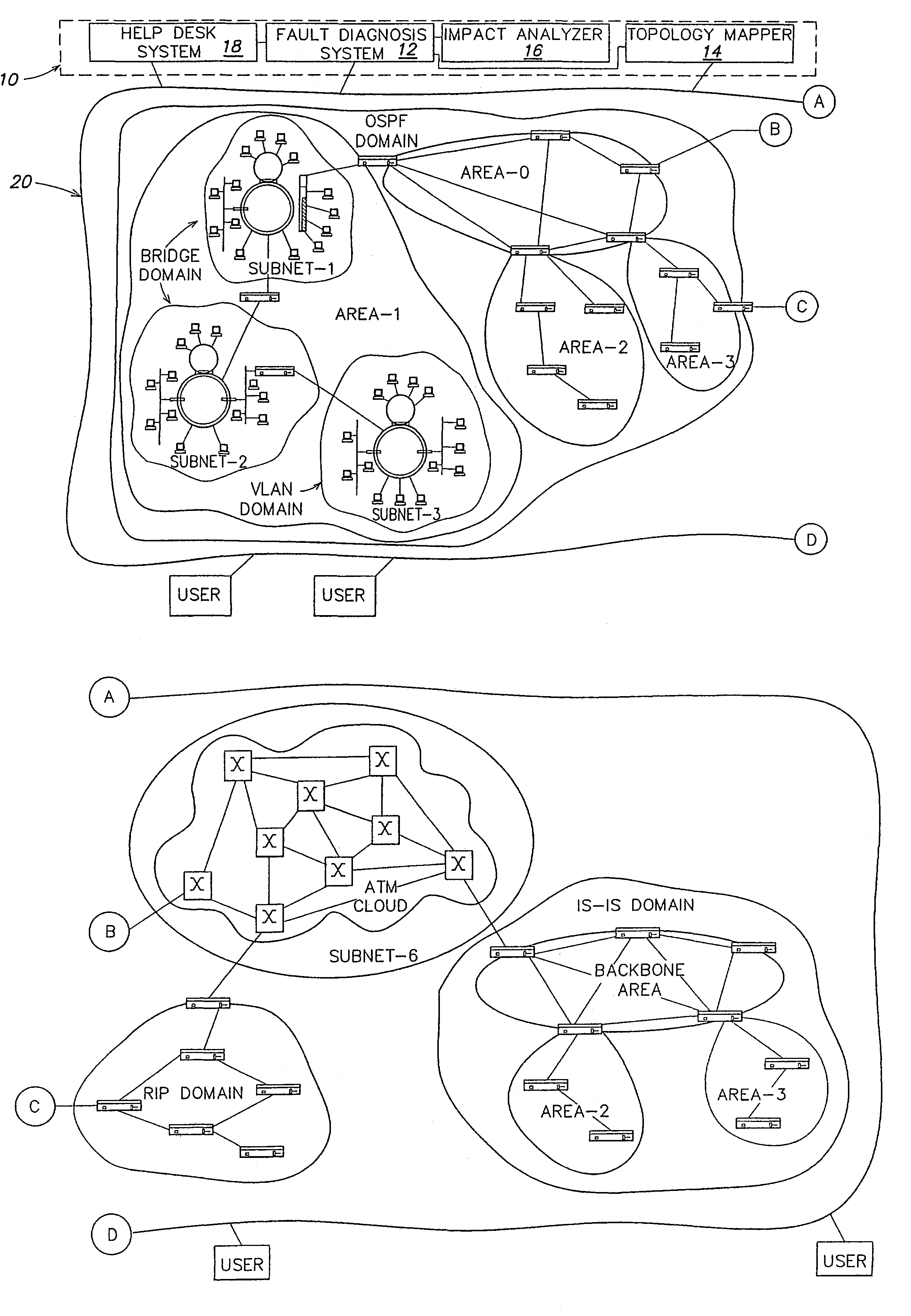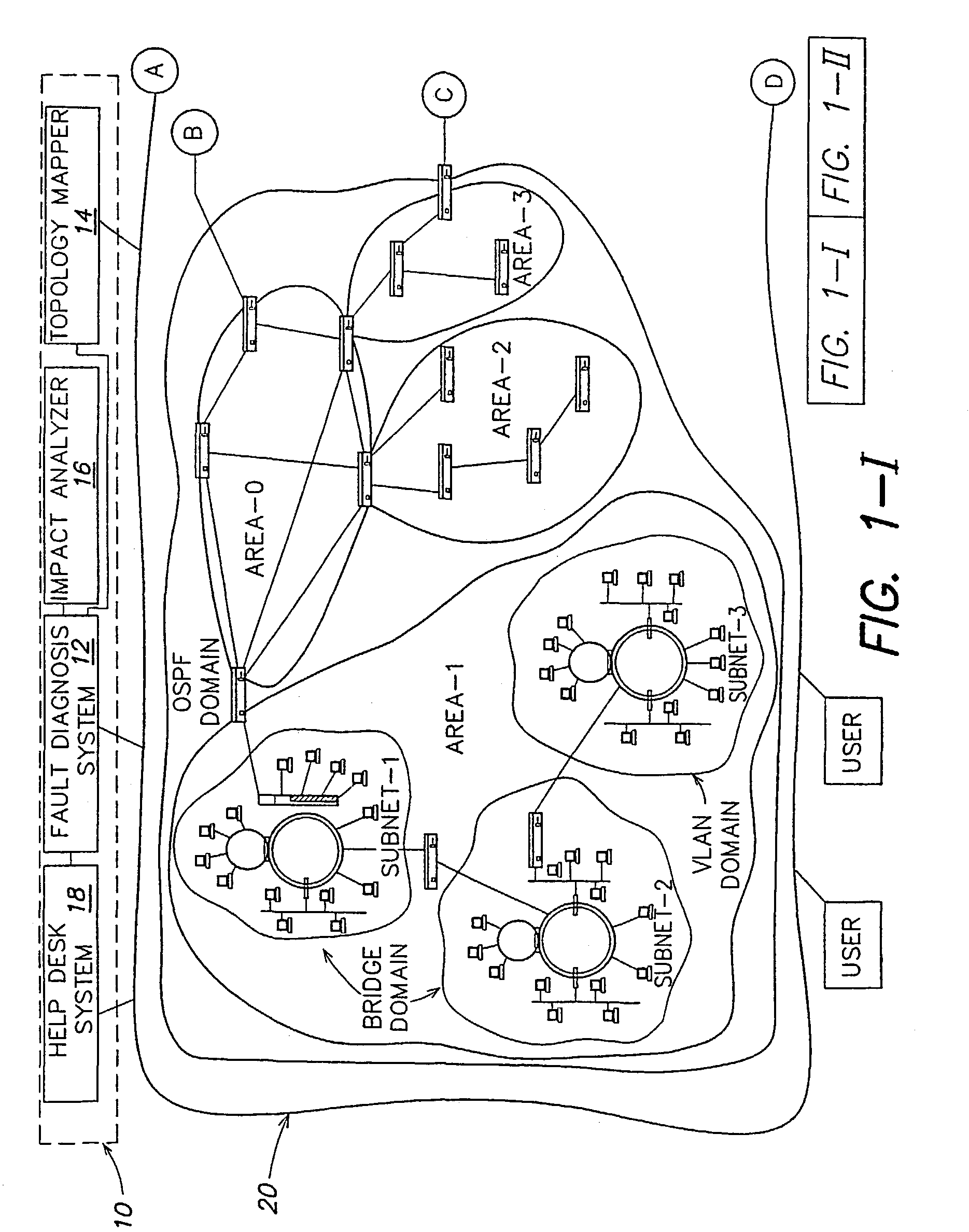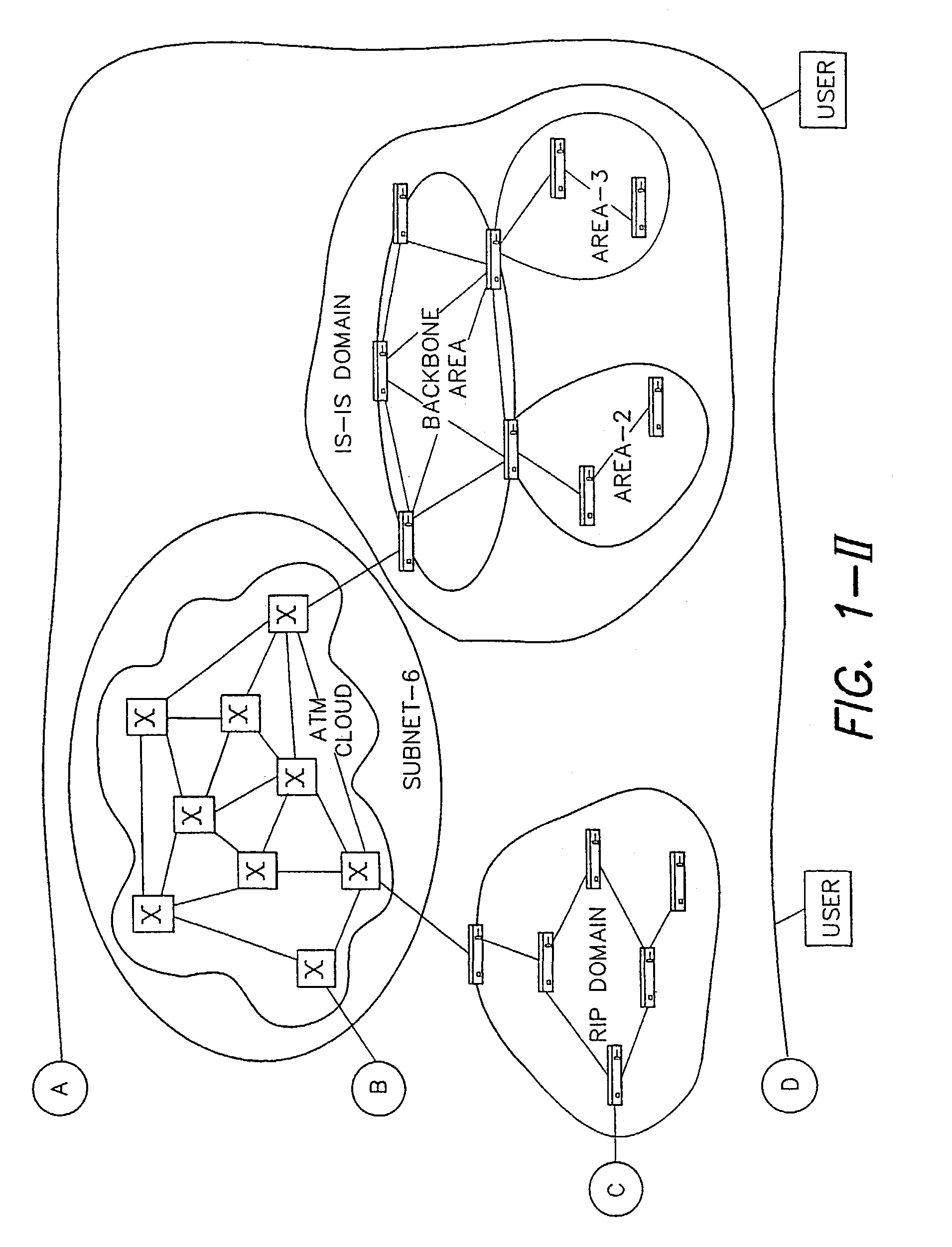Systems and methods for diagnosing faults in computer networks
a computer network and system technology, applied in the field of systems and methods for diagnosing faults in computer networks, can solve problems such as network blasters, slow access, redundancy loss, etc., and achieve the effect of minimizing the burden on an already degraded network environmen
- Summary
- Abstract
- Description
- Claims
- Application Information
AI Technical Summary
Benefits of technology
Problems solved by technology
Method used
Image
Examples
Embodiment Construction
[0052]FIG. 1 shows diagrammatically a network management system 10 including a fault diagnosis system 12, a topology mapper 14, an impact analyzer 16 and a help desk system 18. The network management system communicates with a communications network 20 (or application service). The network includes a set of interconnected network elements such as routers, bridges, switches, and repeaters. These network elements provide transportation of data between end stations. Furthermore, there are computers known as servers that provide services such as e-mail, accounting software, sales tools, etc. Typically, data is transmitted electronically or optically, and network elements can forward data in packets, frames or cells to the intended destination. Servers include network adapters and / or software that interpret the electronic or optical data packet into the data elements and pass these elements to the appropriate application being hosted.
[0053]The network management system 10 includes a comm...
PUM
 Login to View More
Login to View More Abstract
Description
Claims
Application Information
 Login to View More
Login to View More - R&D
- Intellectual Property
- Life Sciences
- Materials
- Tech Scout
- Unparalleled Data Quality
- Higher Quality Content
- 60% Fewer Hallucinations
Browse by: Latest US Patents, China's latest patents, Technical Efficacy Thesaurus, Application Domain, Technology Topic, Popular Technical Reports.
© 2025 PatSnap. All rights reserved.Legal|Privacy policy|Modern Slavery Act Transparency Statement|Sitemap|About US| Contact US: help@patsnap.com



